Just one lonely image, captured by Juanita Schubert in the 1940s. That was all that was left of the old Ferris House in Carson Valley. Or so we thought.
But wait! Locals informed us the old Ferris home still exists — the house was moved in the 1940s, and now sits off Stockyard Road, a few miles east of its original location! So naturally we went “off on the hunt” to find it.
Back in its day, the house stood in a fairly remote location, at the crossroads of two early roads and about four miles east of Genoa. . From the west, the Boyd Toll Road meandered in from Genoa before heading southeast across the valley. And from the north, the Cradlebaugh Road headed down the valley from Carson City and continued on south.
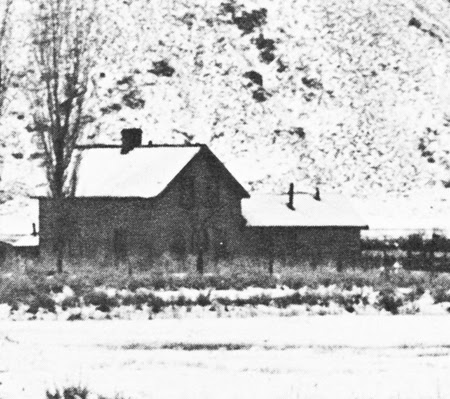
In terms of today’s geography, that translates into north of Muller Lane, on the west side of Hwy 395. And there’s a great landmark that can help you find the right spot today: the old house once sat just below the prominent Douglas County “D” on the side of the hill. (Look closely at the top photo above, and you can make out the white “D”!)
The Ferris family arrived in Carson Valley in September, 1864, after crossing the plains by wagon train from Galesburg, Illinois — George W.G. Ferris, his wife Martha, and eight of their ten children. (Son Fred was a soldier in the Civil War at the time; and daughter Harriet had died as a baby in 1849).
This actually wasn’t the first trip west for George Ferris Sr.; back in 1851 he’d spent seven months in California seeking Gold Rush riches with relative Chauncey Noteware. Although Noteware remained in the west (later becoming Nevada’s first Secretary of State), Ferris had quickly realized there were more lucrative opportunities for him at home, and returned to Galesburg. But he never stopped dreaming of returning. And so in 1864, George Ferris and his family finally made the long, hard overland haul in 1864 by wagon, heading (they originally thought) for San Jose.
Perhaps it was sheer economics that led Ferris to abandon San Jose as a destination and determine to settle in Carson Valley instead. Perhaps the beautiful scenery won him over. Or perhaps relative Chauncey Noteware (by then living in Carson City) had some hand in the decision. However it happened, once here, the Ferrises decided to stay.
Back in Illinois, George Ferris Sr. had been a well-to-do farmer. He’d realized a handsome sum by selling his Illinois farm — some say as much as $60,000. But he had taken his profits in greenbacks. To his dismay, he found that here in Carson Valley, greenbacks were disfavored and he was forced to pay for his new land in gold. He would later tell listeners that he’d lost $10,000 to $12,000 by the conversion; descendants told an even worse tale, saying he’d realized a mere fifty cents on each greenback dollar.
They promptly set about building a home, and by 1865 they had what one later biographer called a “rudimentary ranch house” in Carson Valley. Great-granddaughter Grace Dangberg would later say that the home was constructed “with nails hammered out on the anvils of Henry Van Sickle.” The plaster on its interior walls was mixed with horsehair for strength, she tells us (a common building technique at the time). And the parlor featured a fancy fireplace with a marble face. Not quite so “rudimentary,” after all!

In years to come, the Ferris house would be the scene of many happy memories — and several tragic ones, as well.
One of the happiest events took place in March, 1866, when Margaret Gale Ferris (oldest living daughter of George Ferris Sr. and an older sister of Ferris Wheel inventor, G.W.G. Ferris, Jr.) married prominent rancher H.F. Dangberg, here in this house. She was just 17 at the time, while Dangberg was in his middle-30s — twice her age. Margaret lived thereafter on the Dangberg Home Ranch, and raised her children there.
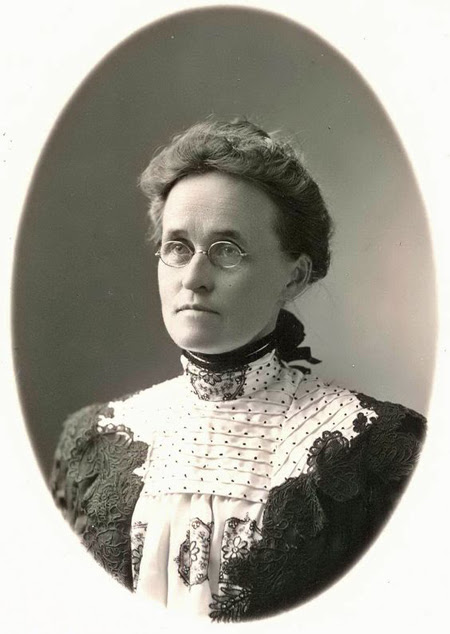
Although the house would continue to be referred to as “the Ferris house” for many years, the family actually didn’t live here for long. In 1868, George Ferris, Sr. purchased a nearly-new home in Carson City from Gregory A. Sears. The “Sears-Ferris House” had just been built in 1863, and it still stands today at 311 West Third Street.
Just why the family left Carson Valley and moved to Carson City is a matter of some dispute. One story has it that the family feared the local Washoe Indians after an accidental shooting raised hard feelings. But as historian Richard G. Weingardt put it, George Sr. was simply “tired of living on an isolated ranch.” Carson City probably offered a more citified existence and greater social and cultural activities for the well-heeled family.
Whatever the precipitating reason was, in 1868, just four years after arriving in Nevada, the Ferris family moved to Carson City. There George Sr. continued his passion for farming as a “gentleman farmer.” And he also did his best to beautify his new hometown; it’s Ferris who is credited with planting hickory, black walnuts and chestnut trees on the grounds of Nevada’s Capitol building. He would eventually sell the Sears-Ferris House in Carson to his daughter, Mary, in 1890.
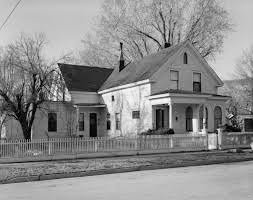
As for the Ferris Ranch in Carson Valley, Grace Dangberg tells us that the family eventually sold it to Margaret’s husband, H.F. Dangberg, who leased it to tenant farmers. So over the coming decades, the Ferris house didn’t stay empty.
And here’s where the tale turns tragic. German immigrants Anna and Fritz Sarman arrived with their family in May, 1882, and took up residence in the former Ferris House. The Sarman family continued to live peacefully in the home for the next dozen years. Then on May 8, 1895, Anna was brutally murdered inside the house — struck in the head with a hatchet.
Suspicions focused at first on Anna’s husband, Fritz, who claimed to have been out in the fields at the time. But he and other supporters contended the culprit must have been a passing tramp. It was true that drifters along the nearby roads would often stop in at the house for a meal, and one had just eaten breakfast there the day Anna was killed. Sadly, Anna’s murder is still a mystery that’s never been solved.
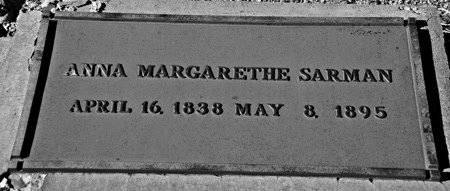
The Ferris house would become the scene of yet another sad event some eight years later, in 1903, while newlyweds Henry and Viola Berning were living in the old Ferris home. The young couple had just tied the knot on Christmas Day, 1902 in Gardnerville. Young Viola soon found herself pregnant with triplets — a nearly unheard-of medical event for the day. About October 17, 1903, Viola successfully gave birth to three tiny girls: Nina, Ina, and Mina. Baby Nina died shortly after birth. And just nine days later, mother Viola, too, died here at the Ferris house (October 26, 1903).
The old Ferris house no longer stands in the fields where Juanita Schubert snapped its picture. But traces of the former occupants still turn up occasionally near the site. An early dime, a silver-plated pocket watch, and parts from various agricultural implements have been found over the years.
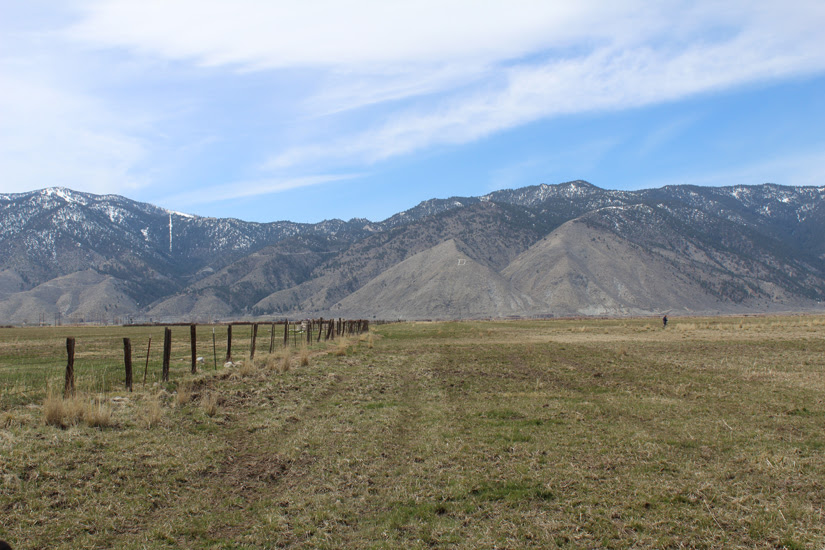
And where did everyone go? Mother Viola Berning and baby Nina are both buried (in unmarked graves) at Genoa Cemetery. Viola’s remaining two triplets both survived, and lived on into their 70s. George Ferris, Sr. moved to Riverside, California in 1881, passing away there in April, 1895. George Ferris, Jr. died in Pittsburgh, PA in 1896, at the entirely-too-young age of 37. Fritz Sarman died in May, 1900, almost exactly five years after his wife’s murder. Margaret Ferris Dangberg passed away in 1946 and rests at Lone Mountain Cemetery.
As for the old Ferris house itself — it was moved to the sheep camp on Stockyard Road about 1942. A subsequent owner had the house significantly remodeled, and used it as a second home when he and his wife came down from Reno. In recent years the old house become part of the Bently holdings, serving as a ranch manager’s home.
It’s so amazing this piece of history is still here, square nails and all! For all the tragedies this old house has seen, how lovely to know that it’s still a survivor.
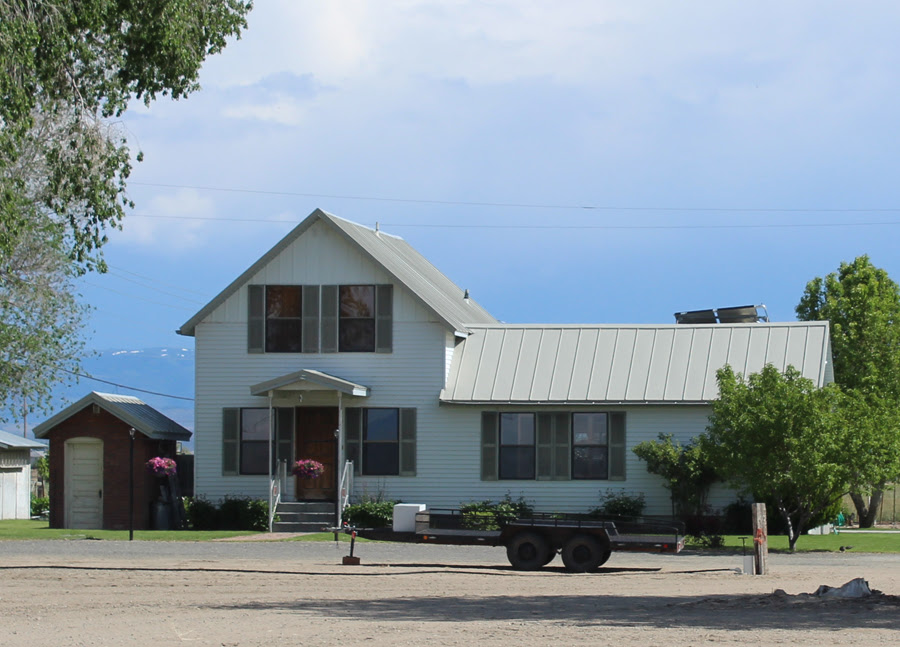
Top image (Juanita Schubert photo): Courtesy of Douglas County Historical Society & Museum.
We hope you’ll visit Dangberg Home Ranch Historic Park to learn more about the Ferris family, the Dangberg family — and Carson Valley’s wonderful history! Many thanks for help with this article to both Mark Jensen of Dangberg Home Ranch and a certain kind and generous researcher who’s too shy to see her name in print.
